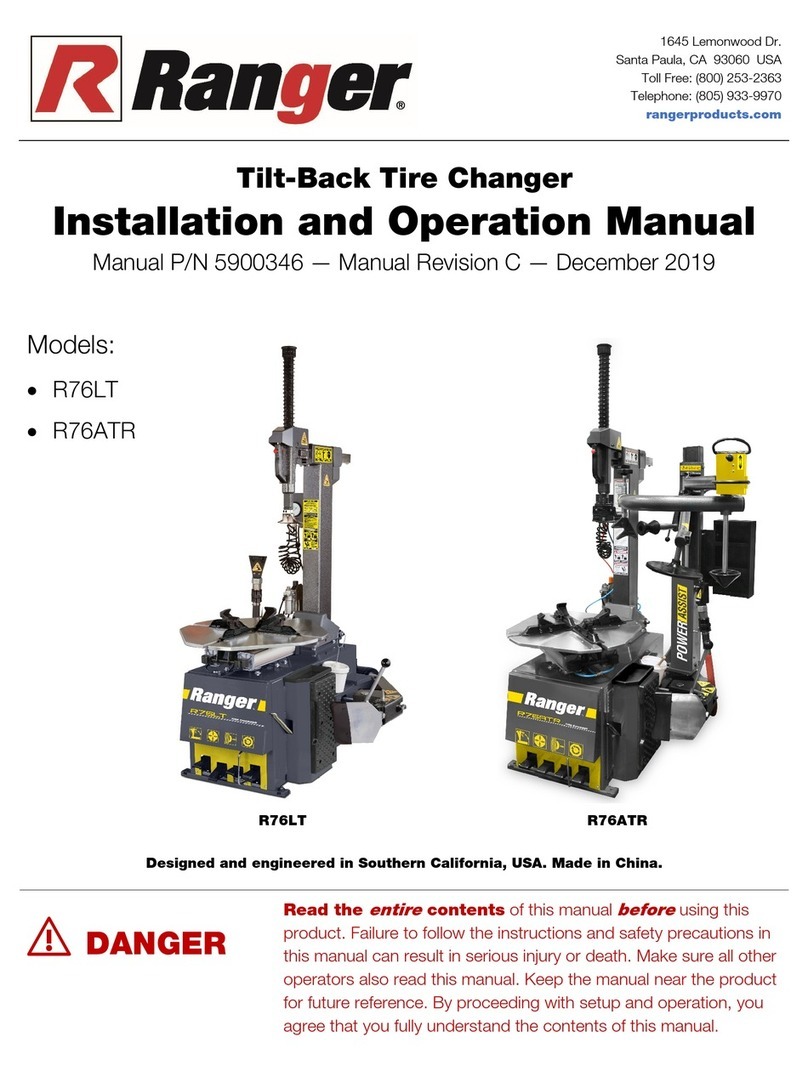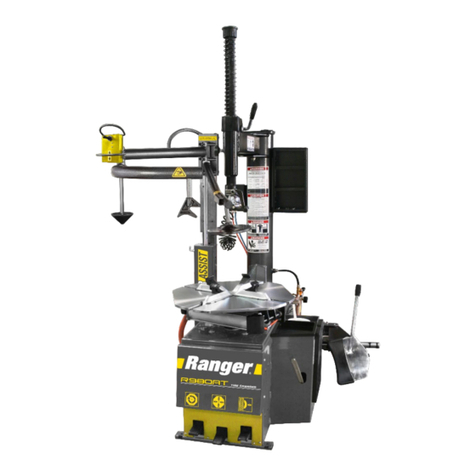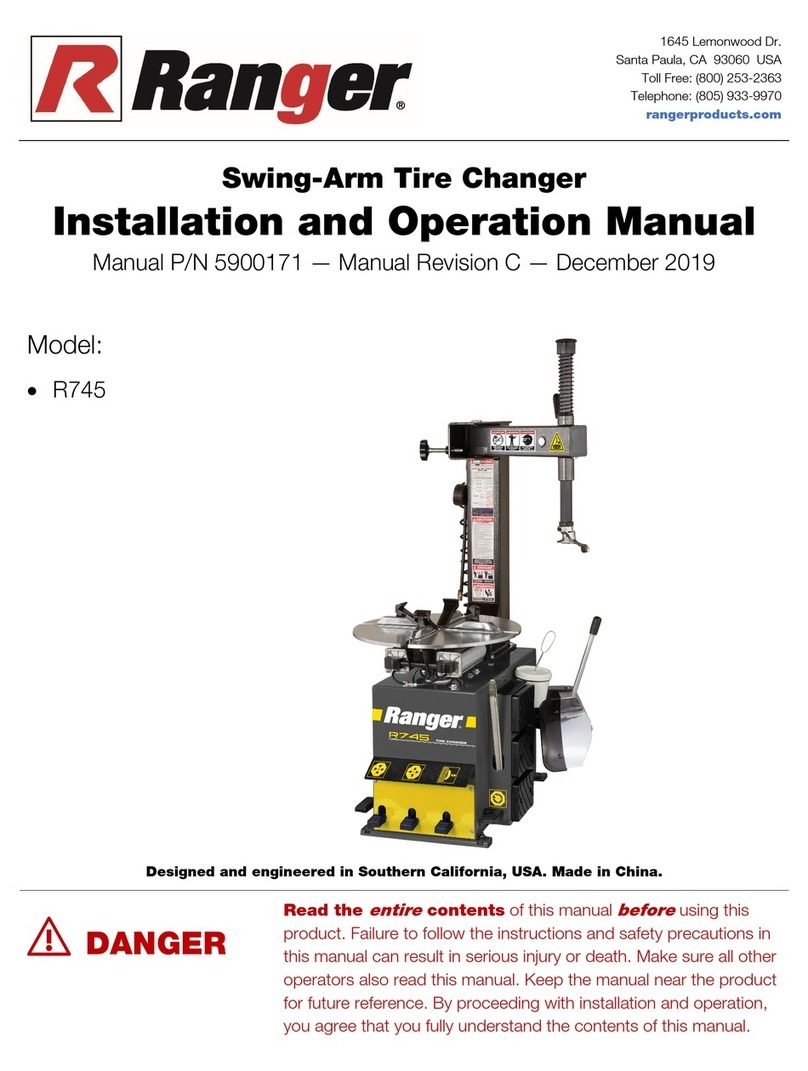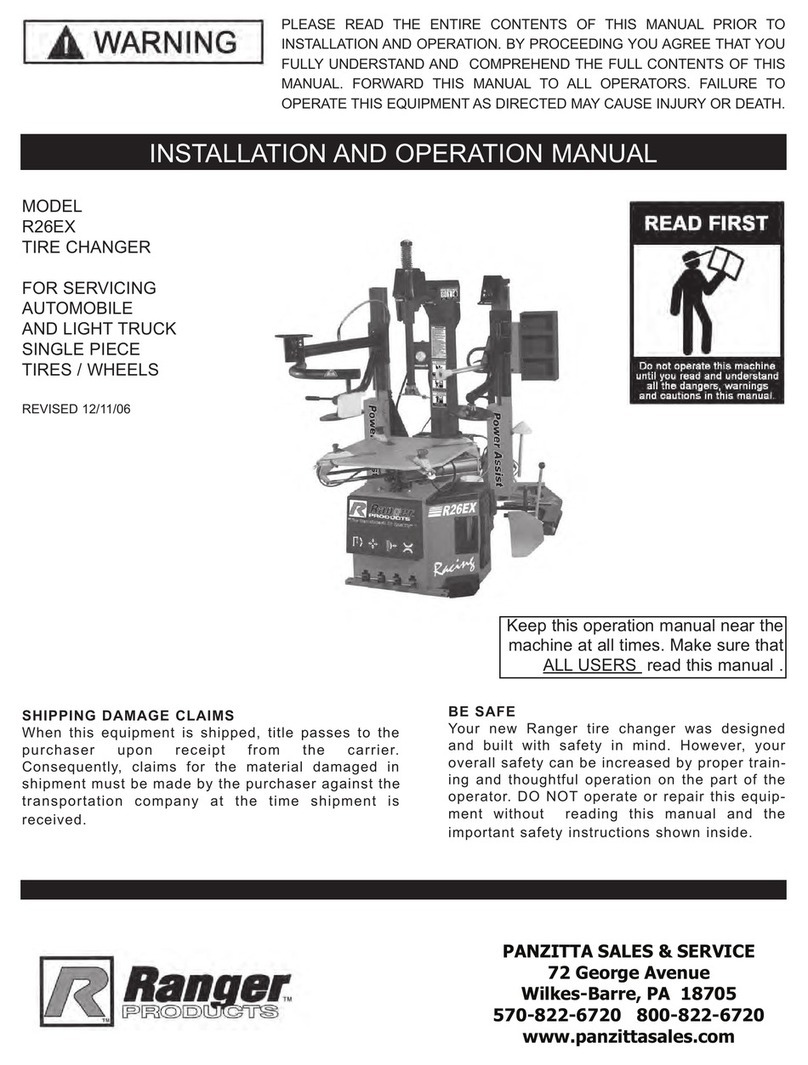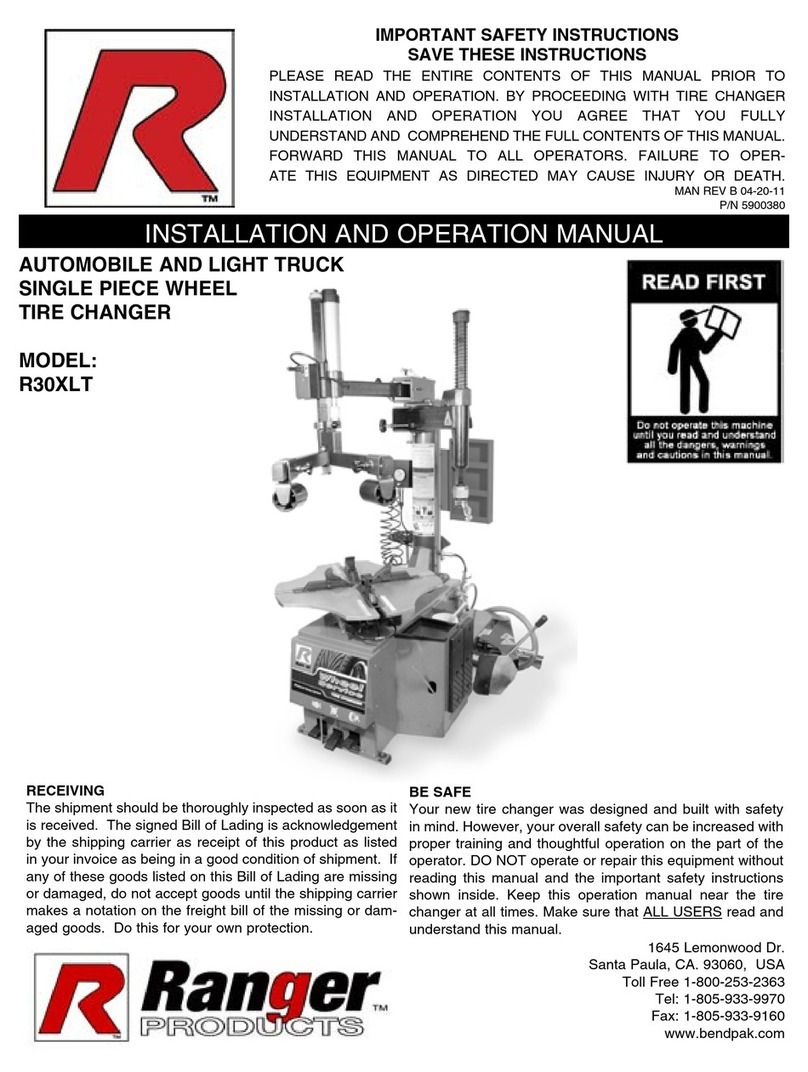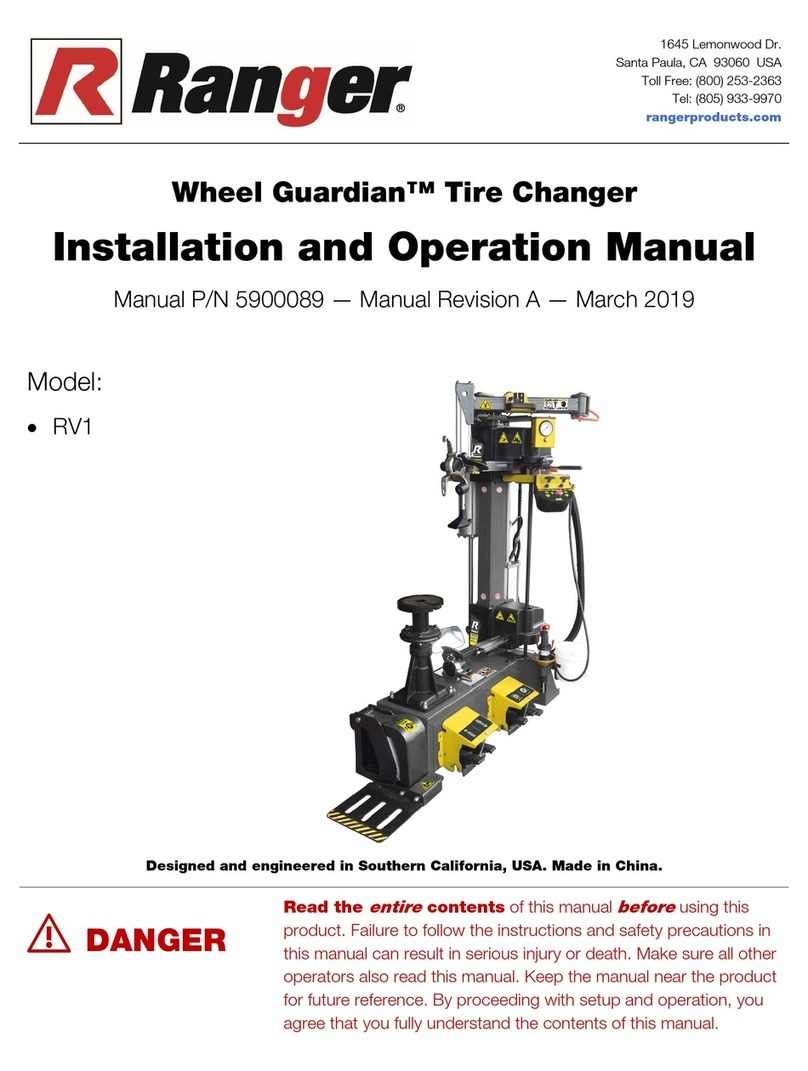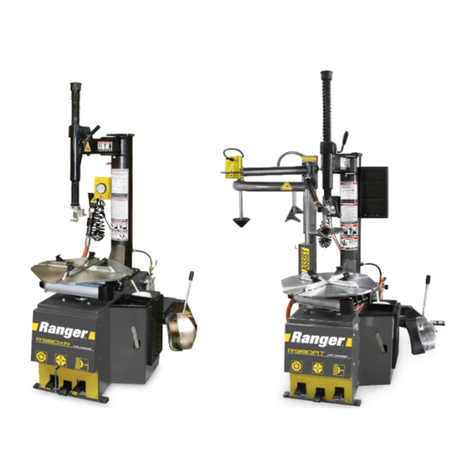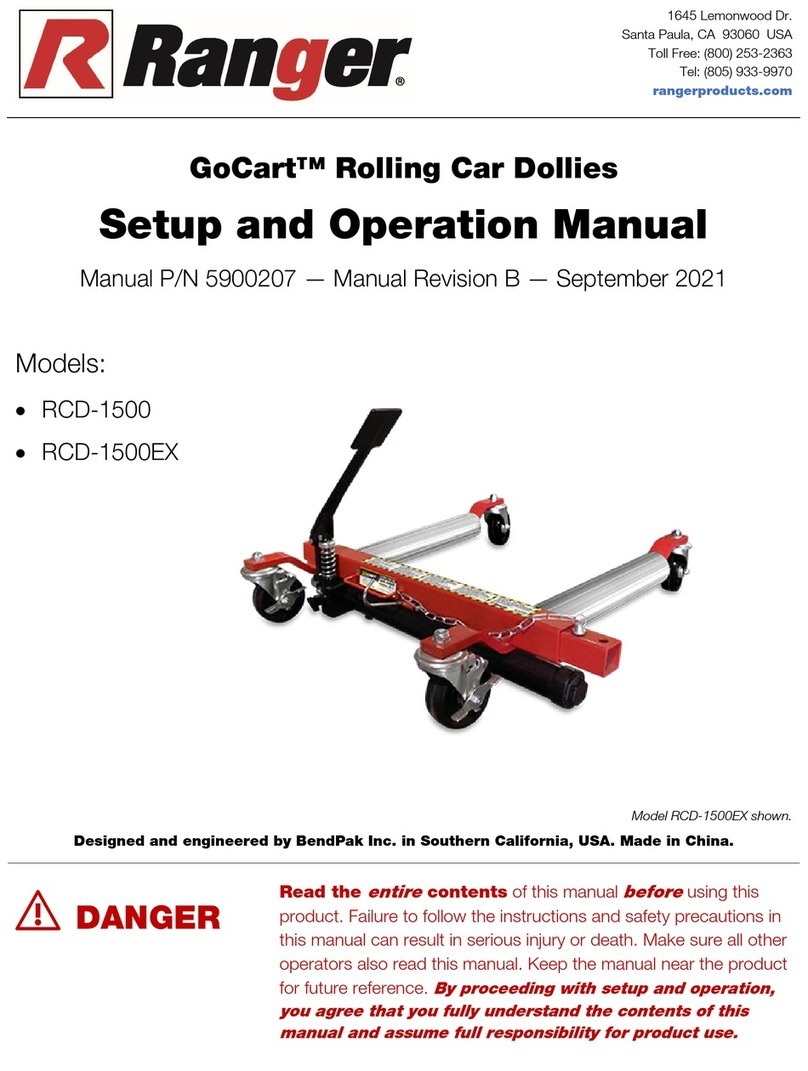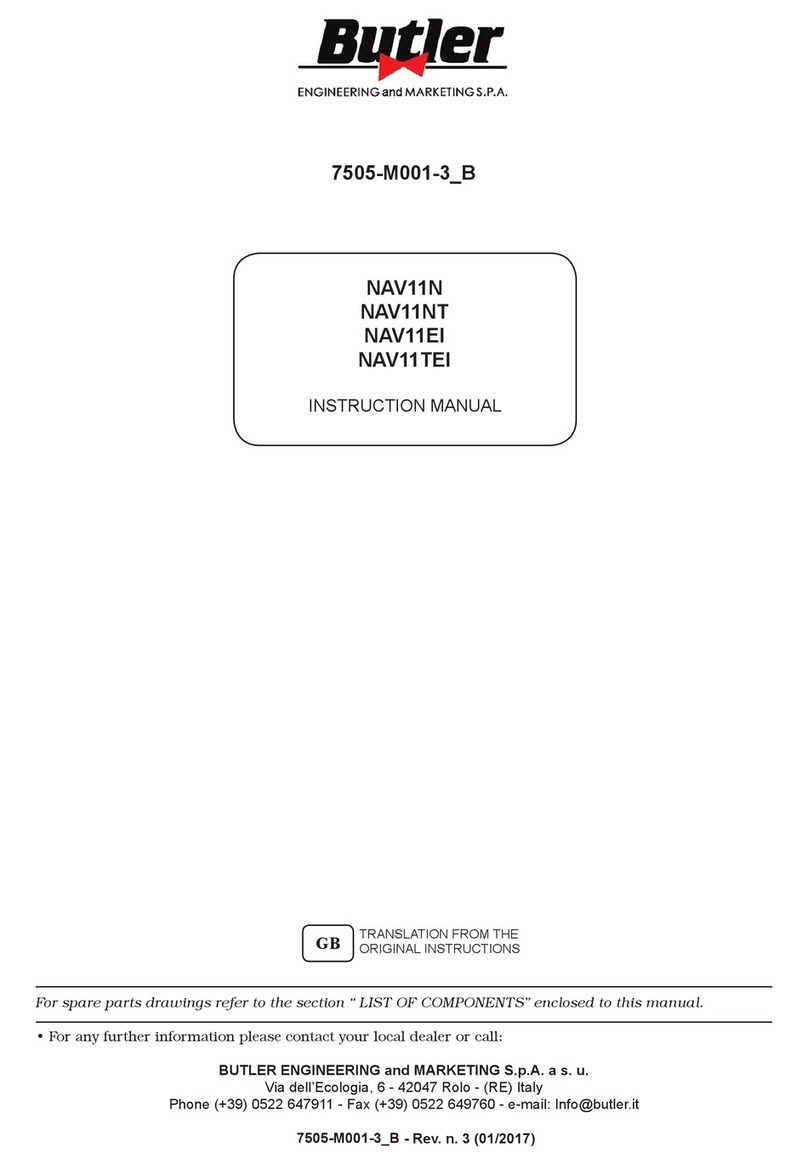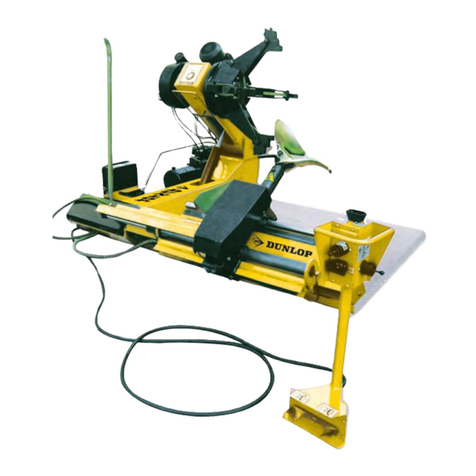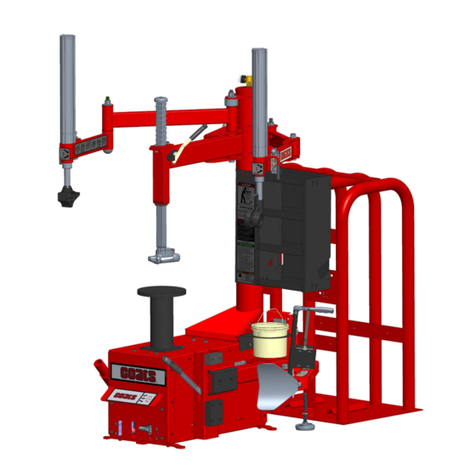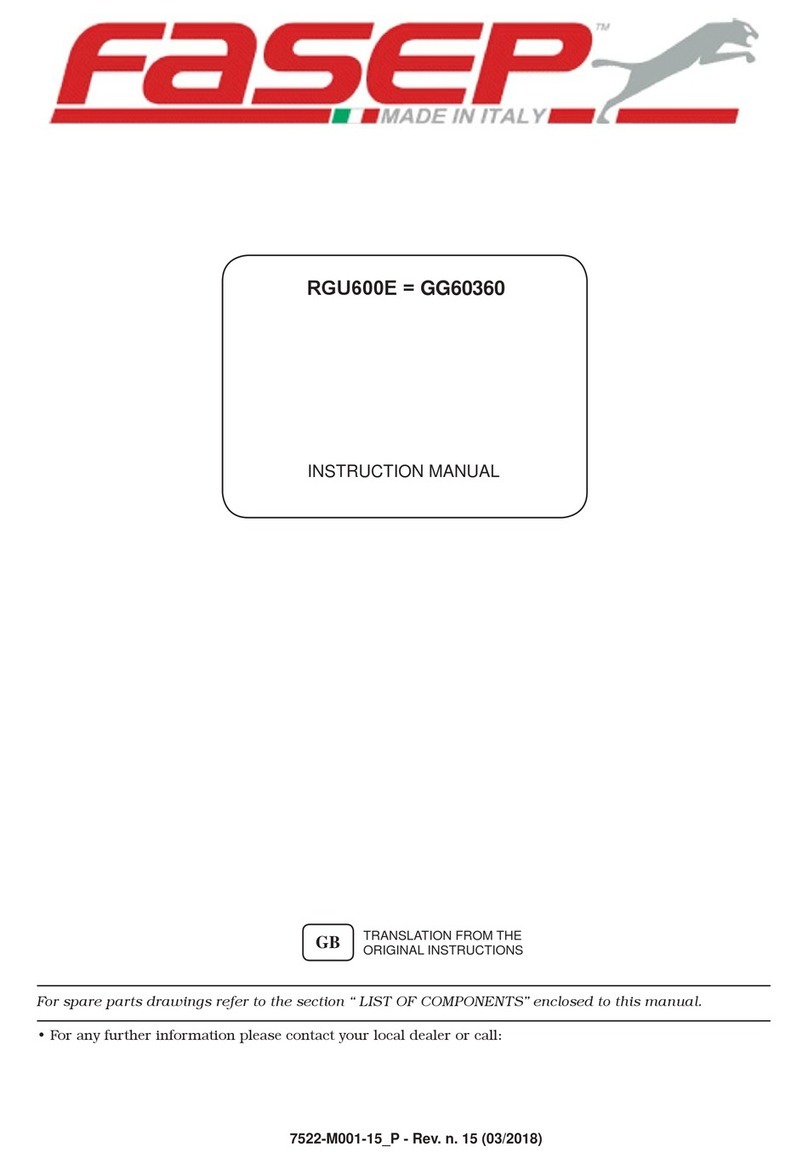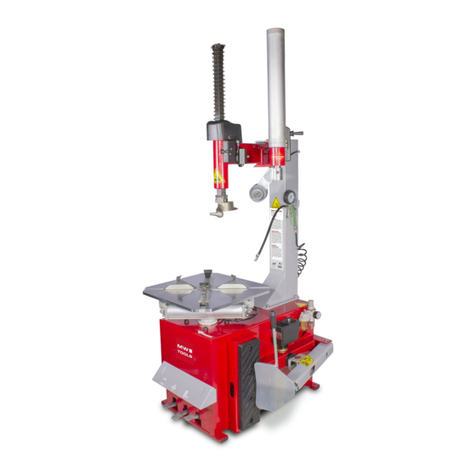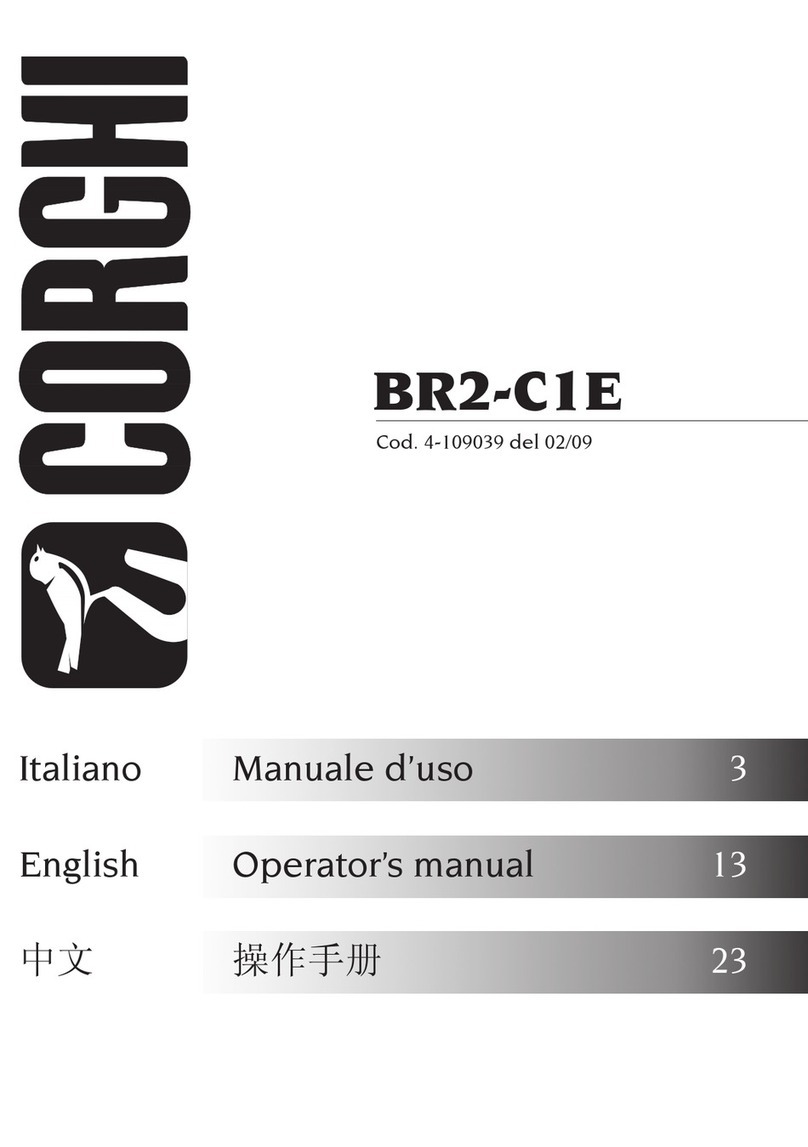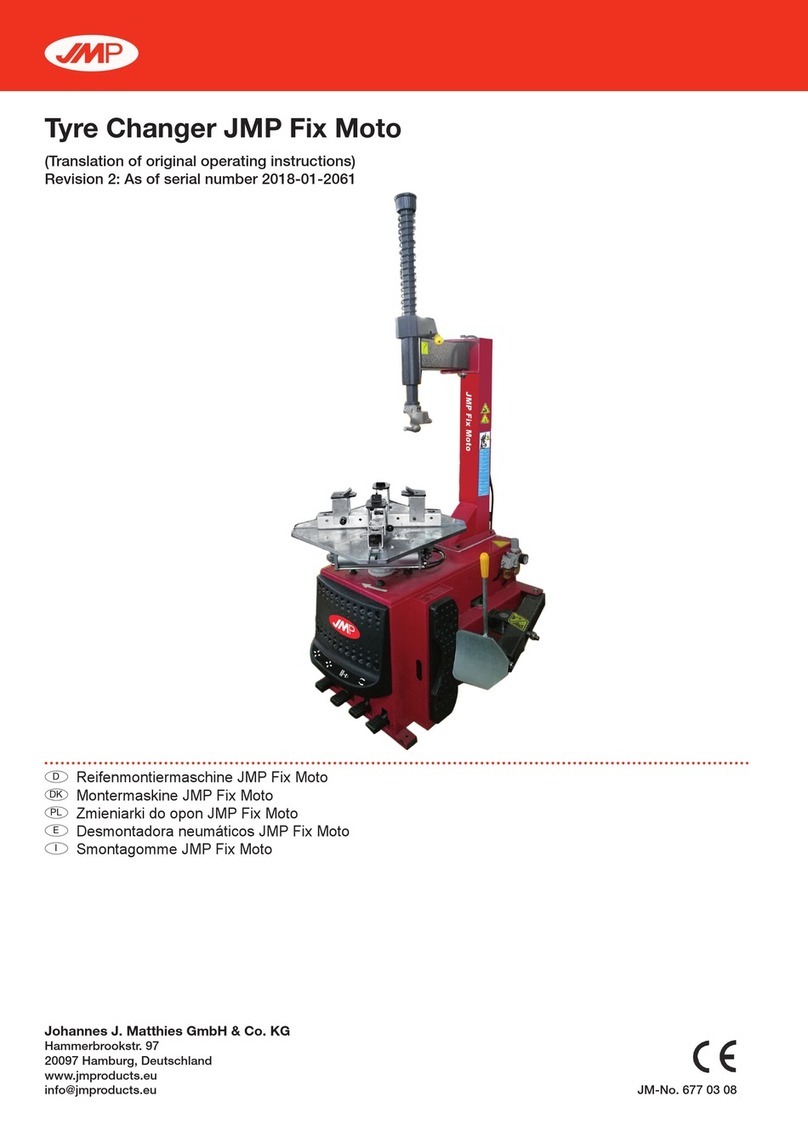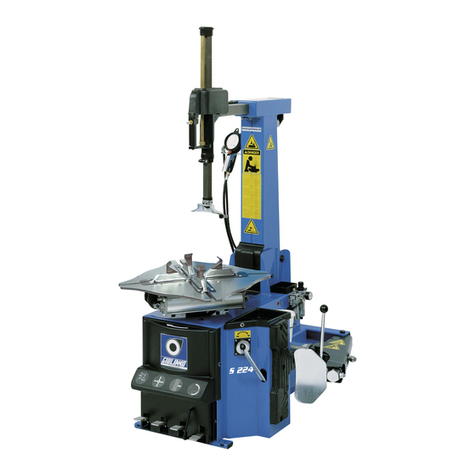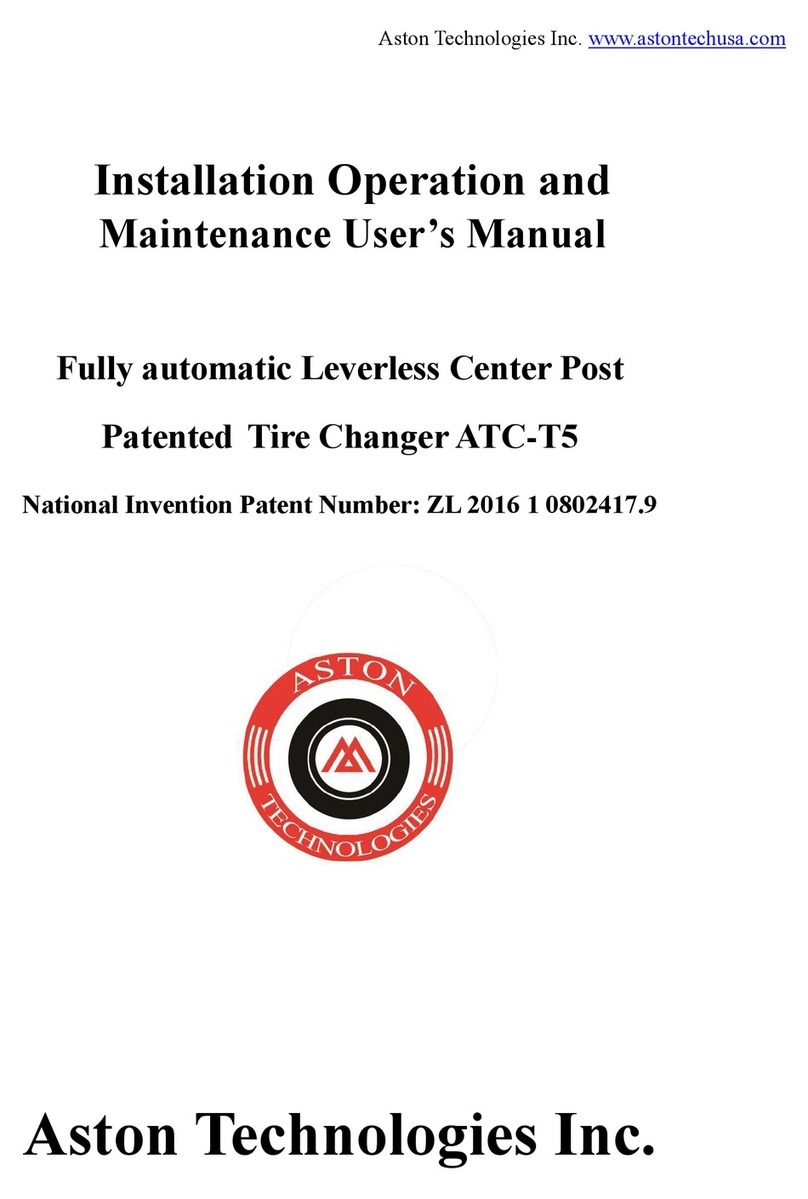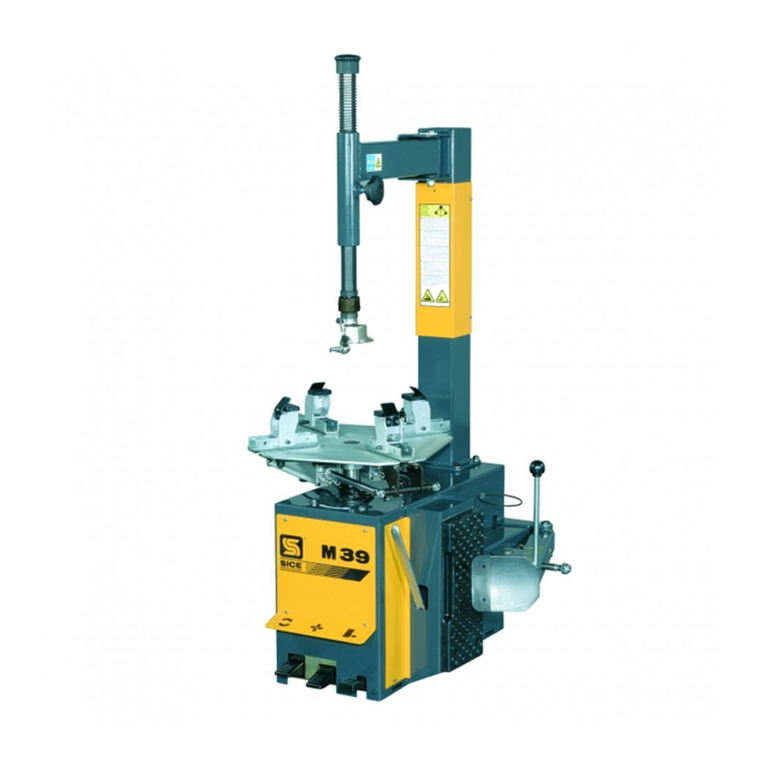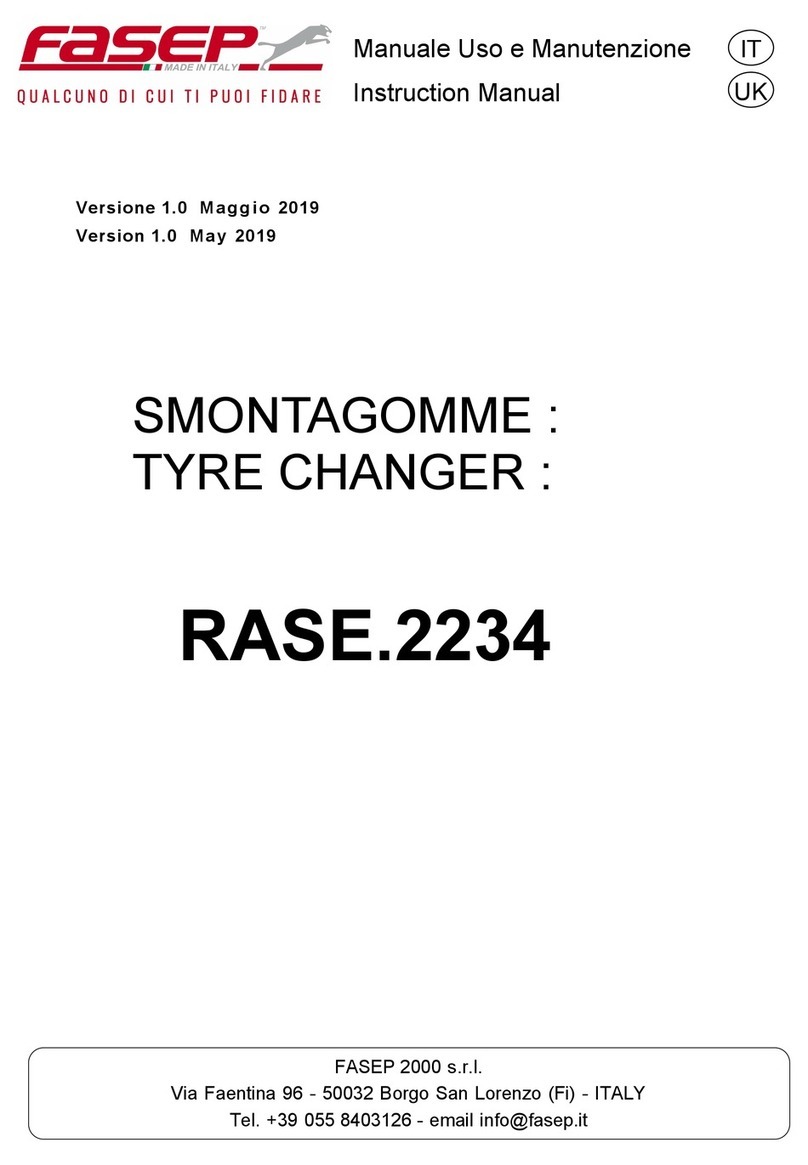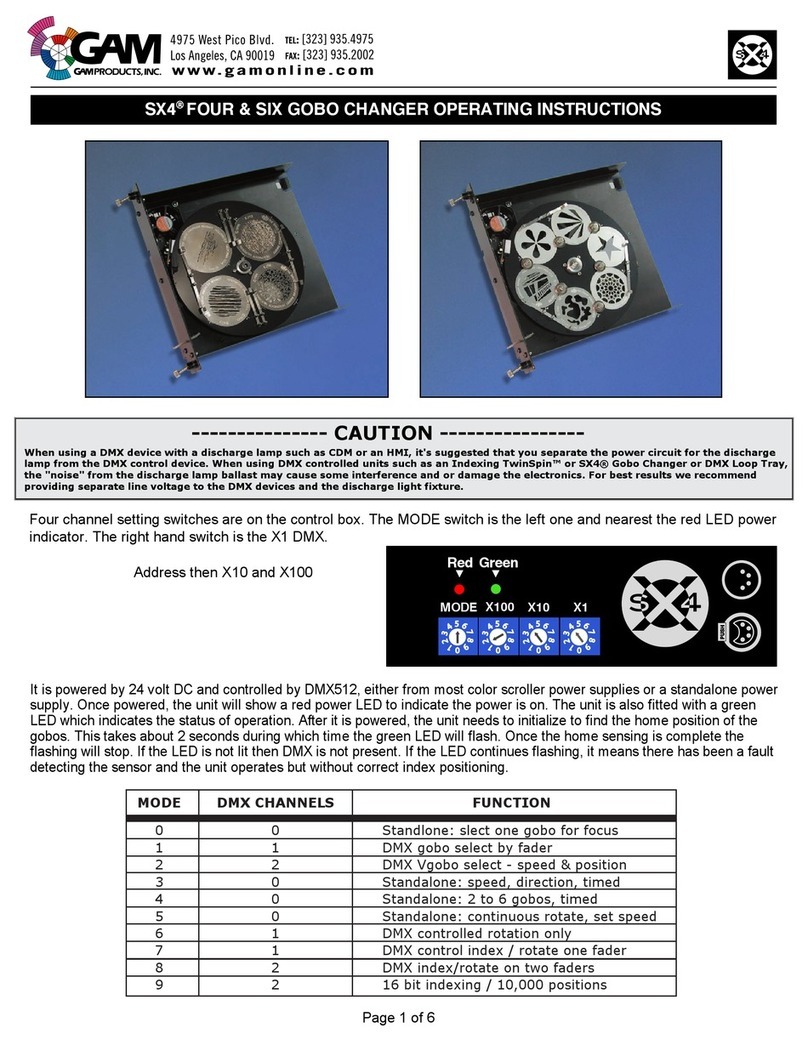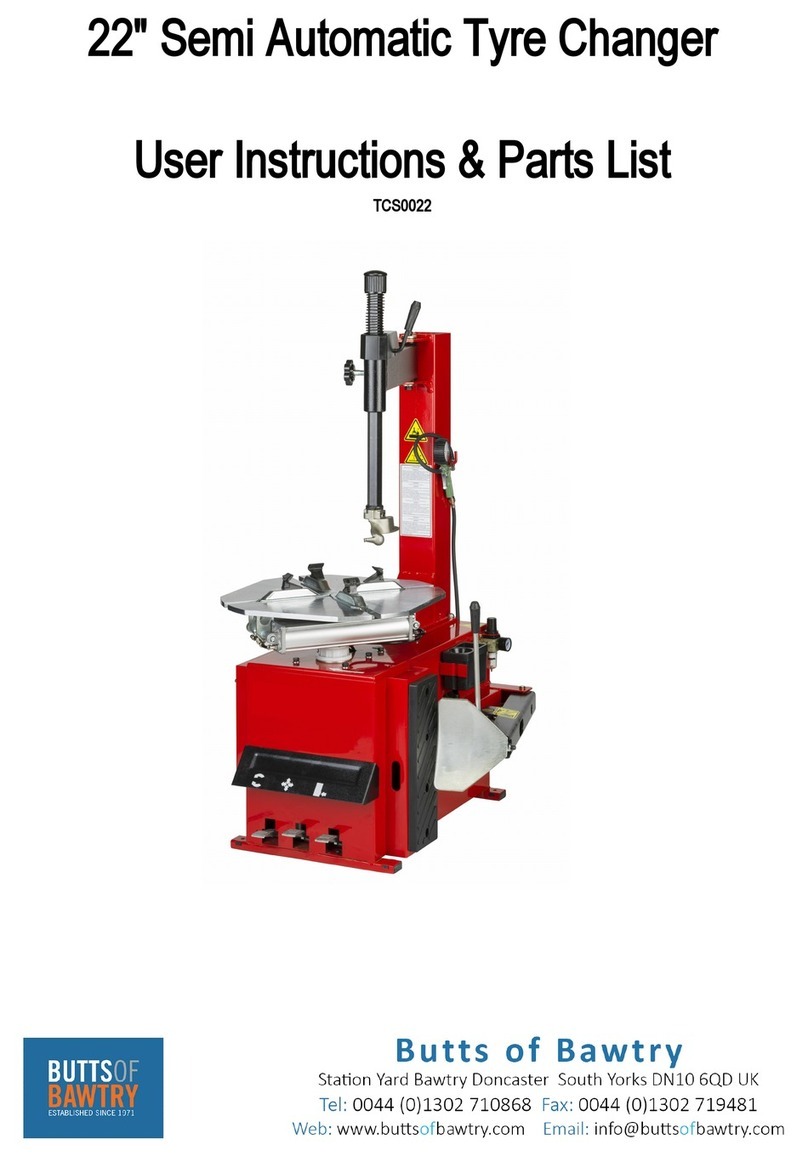
R80EX Tire Changer 8P/N 5900087 — Rev. B — Jan. 2020
Frequently Asked Questions
Question: What does a Tire Changer do?
Answer: A Tire Changer takes Tires off of Wheels (called demounting), puts Tires onto Wheels
(called mounting), and inflates Tires.
Q: What is the difference between a Tire, Wheel, and Rim?
A: The Wheel is the round
metal
piece. The Tire is the round
rubber
piece that surrounds the
Wheel. The outer edge of the Wheel, where the Tire attaches to the Wheel, is called the Rim.
Some people use Wheel and Rim to mean the same thing.
Q: The Tire Changer is described as “tilt back”, what does that mean?
A: It means the Tilt-Back Tower (not the Assist Towers) literally leans backwards, moving the
Mount/Demount Head out of the way. How is this a good thing? It allows you to set up the
Mount/Demount Head in the right place for the Tire you are demounting/mounting, then move it
out of the way, then bring it right back to the same place for the next Tire (Tires are generally
demounted/mounted in sets of four) without having to adjust the Mount/Demount Head again.
Q: What are the steps in the process of demounting a Tire and then mounting a new Tire?
A: The steps are: deflate the Tire, break the Bead, secure the Wheel on the Turntable, demount the
old Tire, mount the new Tire, inflate the new Tire, then remove the Wheel from the Turntable.
Q: What does “break the Bead” mean?
A: A Tire is held on the Rim by the Tire Bead sitting between the Rim Lip and the Bead Retainer on
the Rim. The air pressure in the Tire holds it in place once the Bead is seated (during mounting).
When you “break the Bead”, you move the Tire Bead out of the location where it was seated;
breaking the Bead is
required
before you can take the Tire off the Wheel.
Q: Can I break the Bead without fully deflating the Tire first?
A: No,
do not do this
. Always
fully deflate
a Tire before attempting to break its Bead. The air
pressure energy in a Tire, even if not fully inflated, can be considerable. If you were to attempt to
break the Bead of a Tire that is not fully deflated, that energy would be released all at once,
possibly injuring or, in rare cases, killing the Operator or bystanders.
Q: What thing should I always do when working with the Tire Changer?
A: You must exactly match Rim Width with the Tire you are mounting. The result of a mismatch is
that the Tire could literally explode off the Wheel when you inflate it or while the Vehicle is being
driven. In both cases, people could be injured or killed.
Q: Where should I put my Tire Changer?
A: What you want is a flat Concrete floor with room around it that is also near where you work on
Tires. Ideally, you want it a little off the beaten path, as you must – for safety – keep everyone
away from the Tire Changer while it is in use. No one other than the Operator should be within 30
feet of the Tire Changer while it is in use.
Q: Why isn’t there a Plug on the end of the Power Cord?
A: 220 VAC plugs vary by region, so if you are going to use a Power Cord with Plug, you need to
use a Plug that is appropriate for the power outlet you will be using. The other option is to wire the
Tire Changer directly into the facility’s power system. You
must
have a licensed Electrician
perform all electrical work in accordance with all applicable electrical codes.
